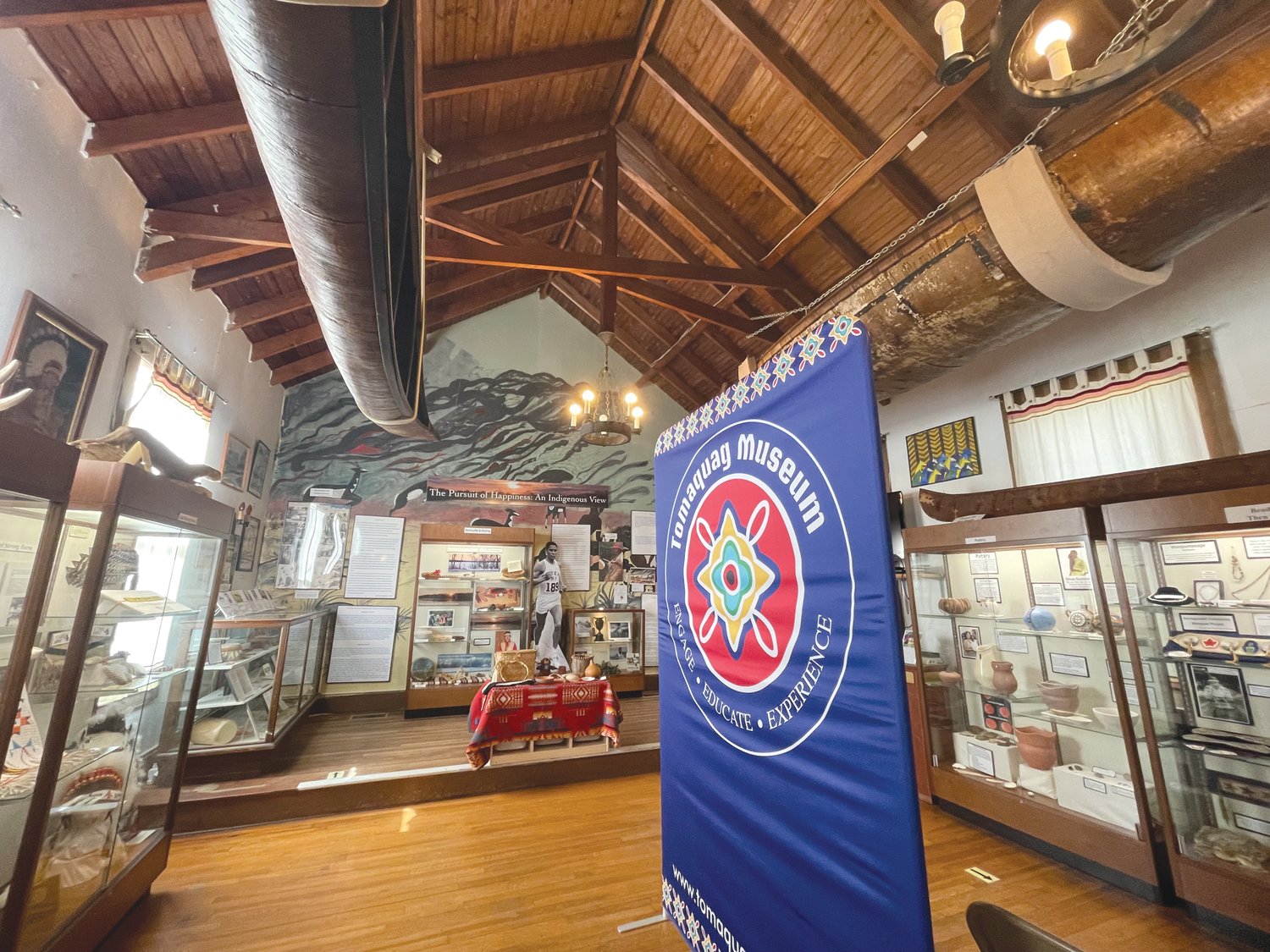URI partners with the Tomaquag museum to engage community members with the indigenous history of the Kingston Campus. PHOTO CREDIT: Cranston Herald
Understanding the Indigenous history that lies on the University of Rhode Island’s campus is essential for students, according to Amy Albert, the community engagement coordinator at the Center for Career and Experiential Education at the University.
This is the main reason that the URI Clearinghouse for Volunteers reached out to the Tomaquag Museum, an Indigenous historical organization in Exeter, R.I., to come to URI and host a “Cultural Awareness Training” as a part of their Advocacy series on Feb. 17. The Tomaquag Museum is also currently building a new location in Kingston, Albert said.
“Our university is built on Narragansett land, and it is important for students to understand the history of them, while also recognizing that there may not be as many opportunities for cultural competency trainings related to our Indigenous community, which is so interwoven with the University of Rhode Island,” Albert said.
The event, which was held both virtually and in person, was an hour-long lecture on the history of different Indigenous tribes in the area, specifically the Narragansett people. Silvermoon LaRose, the assistant director of the Tomaquag Museum, taught students about the underrepresentation that Indigenous people face in society.
“When you walk into a room, and you look around at all of the people in there and who’s being represented, Indigenous people are often not there,” LaRose said. “They’re not at the table. They’re often not a part of the conversation. Because we are not in those spaces, we are often forgotten.”
The 2020 United States census report showed that the Native population was about 2.99 percent, according to LaRose. In the 2019 census estimate, the population was 0.9 percent, meaning that the percentage rose by 2 percent in a year. LaRose said that the reason for this jump was due to people being able to correctly self-identify as Native.
“Anybody who feels that they have a connection to Indigenous ancestry can now identify as Native American,” LaRose said. “When you look at the amount of people who are actually enrolled in tribal communities, that percentage is much lower.”
Multiple factors lead to the silencing of Native American people, said LaRose, such as societal views, negative representation in the media, and history being taught only from the white perspective.
LaRose showed a map of the Narragansett reservations in Rhode Island, pointing out that none of the land currently owned by the Narragansett people touches the coast. This is important, according to her, because a major part of Narragansett traditions have to do with the ocean.
“We do not have oceanfront access, we do not have access to ocean waters, and that is what literally represents who and what we are,” LaRose said. “This changes a lot for our community. But despite that, we are a resilient people. We have worked hard to maintain our culture and traditions and pass those on to maintain our identity.”
She continued by explaining the Indigenous circle of needs, explaining that spirituality is at the core of their culture. Other needs were health, shelter and belonging. She then showed examples of different Indigenous traditions that are meant to connect with spirituality and their virtues, such as ceremonies, festivals and other gatherings.
The next portion of the lecture was about historical trauma that has been passed on through society. LaRose explained that the English settlers in America had no place for Natives in their idea of freedom over 500 years ago.
Forced beliefs in Christianity by European settlers historically led to trauma in Indigenous history, according to LaRose.
“We know that the idea of Manifest Destiny that this country was destined for Europeans to come and settle and have this land at our expense,” LaRose said. “Because that’s what God wanted. If you buy into those beliefs, it’s easier to control people around you. So Christianity was very much an act of assimilation and it did a lot of harm to Native American people.”
She continued by saying that during the time before the Civil War, white settlers then categorized Natives as people of color, forcing them to be enslaved.
LaRose described different statistics within the Indigenous community, further proving the underrepresentation that the community faces as a whole. In the state of Rhode Island, 40 percent of natives are living in poverty. Nationally, the rate of violence against Indigenous women is 84 percent.
To finish off the event, LaRose told listeners to be careful when engaging with Native communities because “hurt people hurt people.”
“There have been a lot of times that white people or people of other cultures have come into our communities and done harmful things, so there is a lack of trust that already exists in our community and people will lash out at you sometimes,” LaRose said.
However, once the community gains trust, according to her, she encourages people to engage in conversations with them and ask questions about their culture and their trauma.
The event commenced with a Q&A session where LaRose answered audience questions regarding Native American culture.

